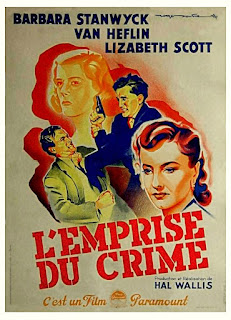Take your mind back to movies of the 1930s and 1940s. Think of the women in these movies - by and large, they are subservient to men in some way; those that are not sacrifice their autonomy by the end of the movie, or are punished in some way. Not this one. As my colleague at Precode.com, says, this is a movie where "our heroine [is] not punished for being devoted to her job, and she’s damned good at it." And it is rather amazing to watch. Kay Francis' Lois is tough, smart, and fair. She loves her work, and enjoys working with people who also enjoy their jobs. Her relationship with Tom Sheridan grows BECAUSE they are so good at what they do, and are so committed to it.
It IS hard to believe that Lois could really be in love with Fred. He's such a lazy and lackadaisical man. He does nothing except play polo, and doesn't seem to mind doing nothing - he's perfectly satisfied with living off Lois' money. He's also perfectly satisfied with cheating on her with Ann Le Maire (Claire Dodd). One particularly interesting scene focuses on Lois' discovery of Fred's relationship - she tosses a hotel room key at him, letting him know she is aware of his infidelity. Ms. Francis is magnificent in her quiet disgust. This was Ms. Francis' first film for Warner Brothers (see this AFI Catalog article), and she does an excellent job.
David Manners gives a the character of Tom real force and dignity. The film is careful to position Tom so he is Lois' equal in everything but job title. He is as smart and as ambitious as she is. His love for her is also dignified. When he believes that any pursuit of Lois would be rejected - she has openly affirmed her love for her husband - he begins to bow out of her life as quietly as possible. There are no scenes, no impassioned pleas for her affection. His only indignity, perhaps, is in settling for the very annoying Ruth. Una Merkel does a good job of making you want to throttle Ruth, if only to get her to shut up.
Mr. Manners began his film career in 1929; within a year, he appeared as the romantic lead in the 1930 version of Kismet. We've already seen him in two other films: Torch Singer (1933) and The Miracle Woman (1931). Regardless of his quick advancement in Hollywood, by 1936 he left for Broadway (where he appeared in three plays) and to pursue other interests, such as painting and writing. He would eventually settle in California, with his life-partner, Bill Mercer (they were together until Mercer's death in 1978). Mr. Manners died in 1998, at the age of 98.
Elizabeth Patterson has a small role as Lois' first secretary, Miss Harper. In one scene, we see her literally lounging at a desk, with her feet up. When Lois tells her they will be remaining in the office to complete some work, Miss Harper refuses, and then asks should she return in the morning. Essentially, she quits a well paying job. Given that the film was released in the middle of the Depression, we wondered if a woman with steady employment would really quit, or refuse to work late, knowing it will be the end of her job (and whether audiences would accept her choice)? Regardless, Elizabeth Patterson is, as always, excellent as the secretary with attitude. Ms. Patterson worked in film and in television from 1926 to 1961. She also appeared on Broadway in 26 plays (between 1913-1954), and was appeared frequently in the television series I Love Lucy. Ms. Patterson never married, and died at the age of 91 of pneumonia.
Of course, Ms. Francis has magnificent clothing - but much of it is tailored for a working woman (but still exquisite). Her gowns were credited to Earl Luick. And Lois' beautiful office was designed by Anton Grot.
We'll leave you with the trailer to the film. You will also see Andy Devine in the role of Tom's friend Andy Doyle. Join us again next week.





































